
The Sydney cafe where memories of old Hong Kong live on through milk tea, loud Cantopop, and ‘a bit of education’ about Cantonese food
- Hong Kong Bing Sutt was born in 2016 after Jessica Chan and Kevin Cheung moved to Sydney and began to miss Hong Kong food. Later they opened a second branch
- The menu, featuring dishes such as cart noodles and claypot rice, offers some customers a taste of home, and others a better understanding of Hong Kong culture
On a cold winter morning soon after opening, Sydney restaurant Hong Kong Bing Sutt is already filling up as I step inside to meet the owners, husband and wife team Jessica Chan Tin-wai and Kevin Cheung Chun-kwok.
Cheung had always dreamed of becoming a chef; he spent his childhood and adolescence helping out at his family’s restaurants in Hong Kong. His parents ran a restaurant in Tsim Sha Tsui and his grandmother owned a canteen in North Point.
His parents, however, urged him not to become a chef, so he studied architecture and IT instead, and eventually worked in the banking industry.
Chan and Cheung, who’ve known each other since primary school, have lived in Sydney twice – first when Chan’s family immigrated here in 1994 and Cheung followed to study in the city, and then when they moved back in 2015 after a decade in Hong Kong.
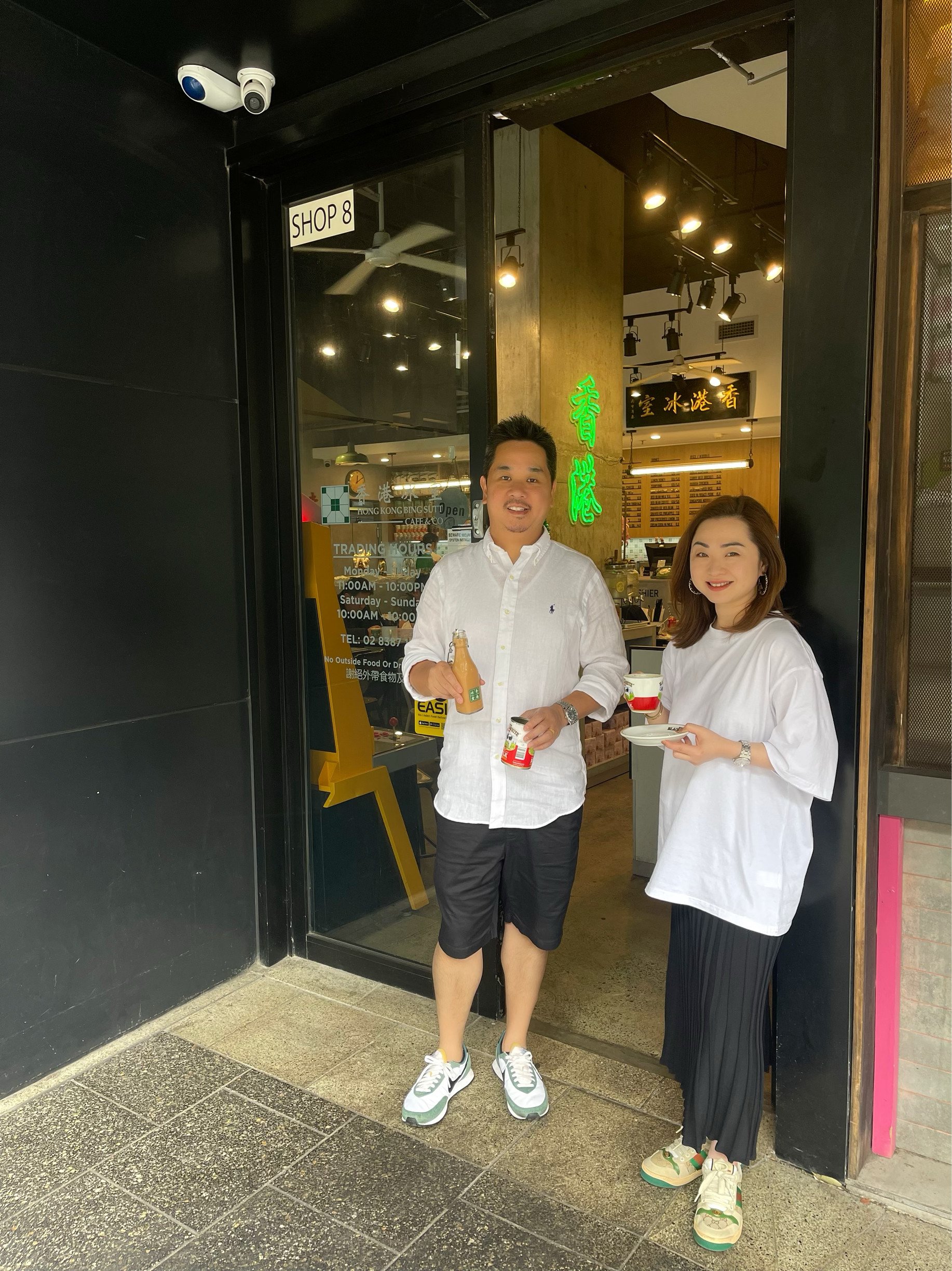
“We really liked the idea of having our own food business, one that could show Hong Kong’s food, style and culture but with our own character,” Cheung says.
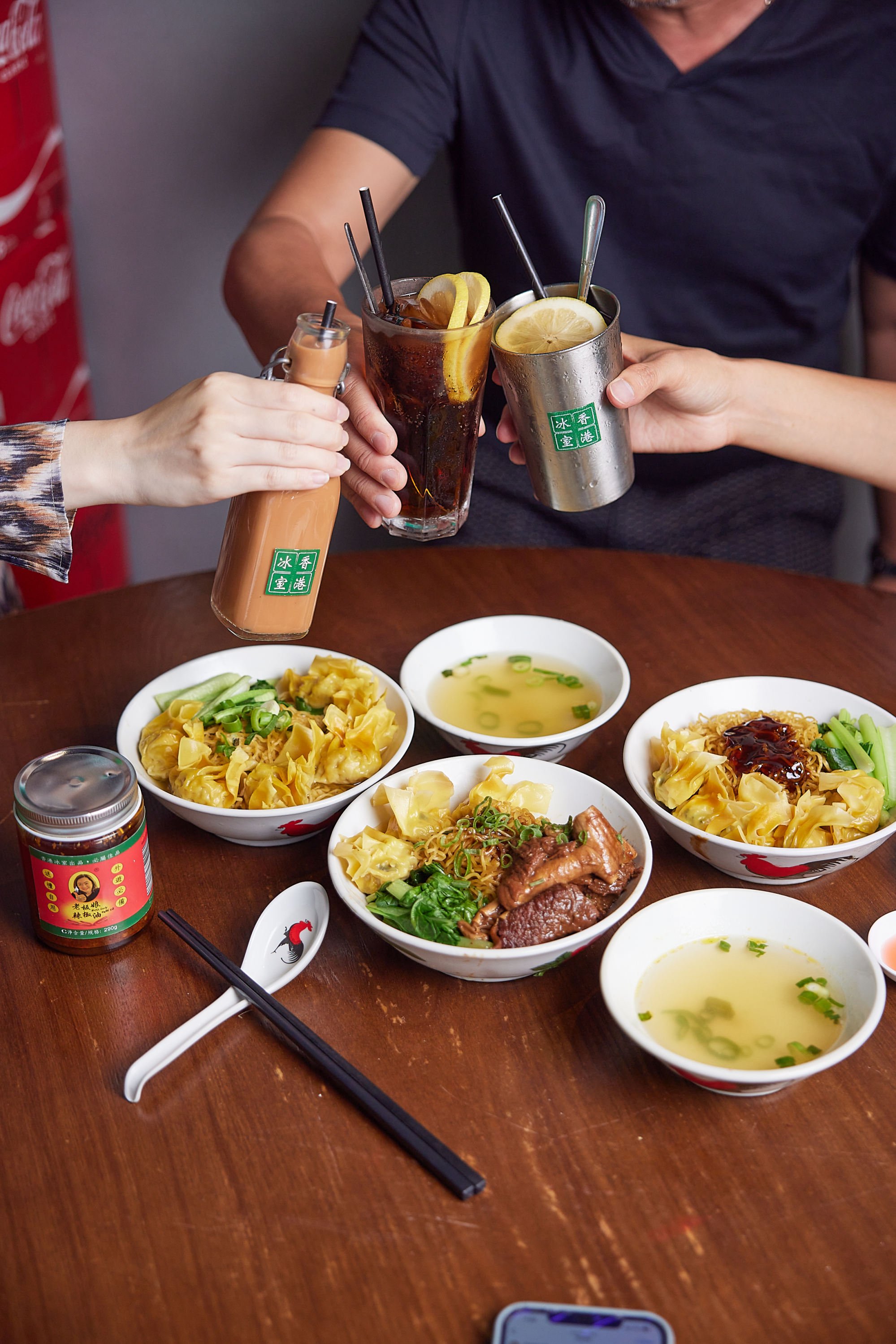
Hong Kong Bing Sutt opened in Burwood in 2016, occupying half of its current space before expanding into the unit next door a few years later, the newer half offering cart noodles.
Last year, they decided to connect the two spaces and undertook a renovation, resulting in its current iteration. They also opened a branch in Eastwood.
“Many things in the bing sutt tell our story,” says Chan.
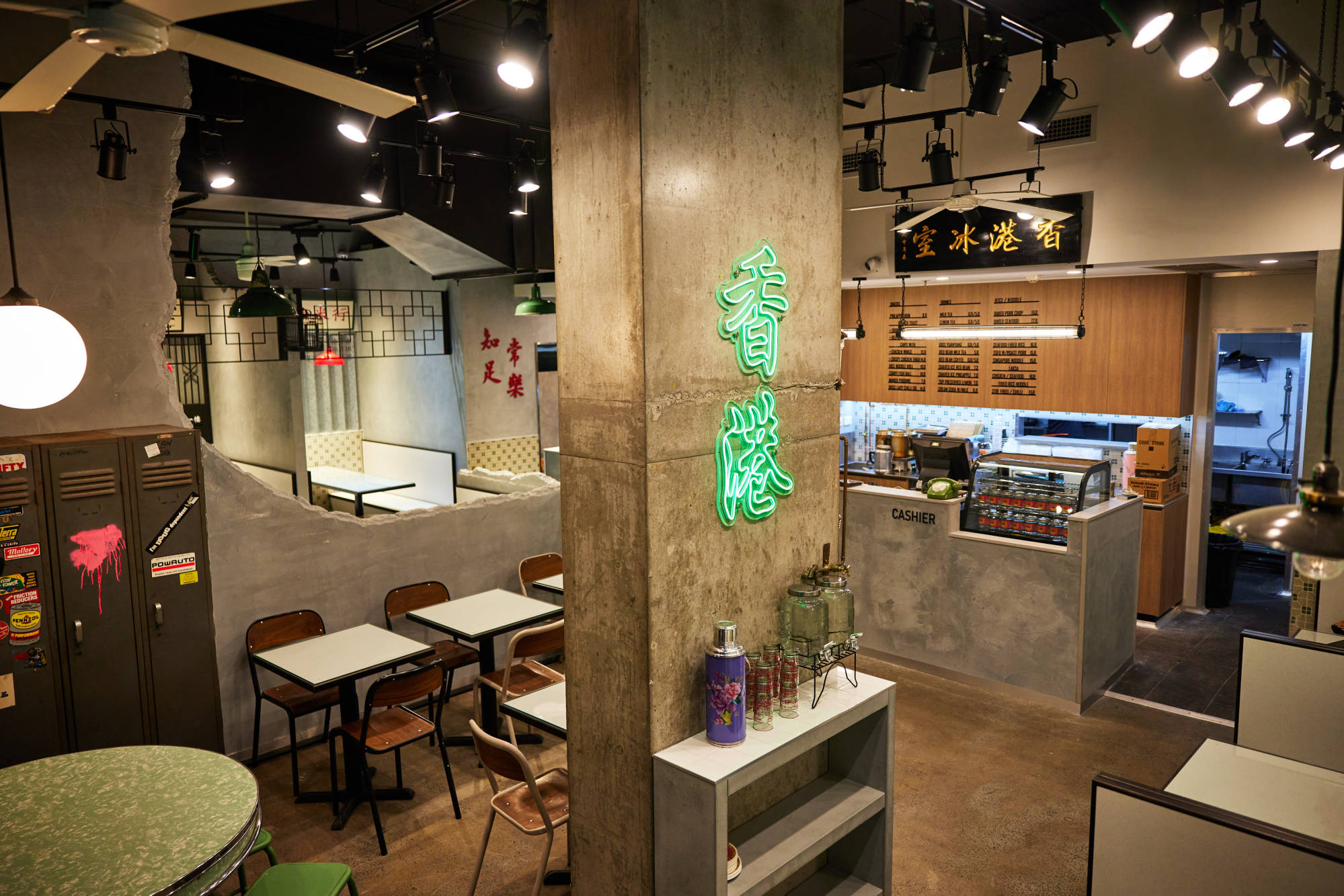
Their memories are embedded in the details of the design, such as the letterboxes with handwritten addresses that have meaning to the couple: the primary school where they met, their home address, their favourite shopping spot and more.
They’ve included their daughter’s name on the signage, and featured some of her paintings. Cheung custom-made and designed many of the elements in the space.
The pair worked together to design and recreate nostalgic Hong Kong elements: tins of Black & White brand evaporated milk stacked behind the counter, green mosaic tiles, loud Cantonese music, antique lamps, posters and photographs, steel shutter gates and neon signs.

This labour of love allowed them not only to showcase the richness of Hong Kong’s history and culture, but also to weave their memories of life in their home city into the cafe.

“I flew back to learn how to properly make milk tea,” she says. Cheung’s family had connections to an expert, who taught Chan which leaves to use to lend colour, which to use for strong flavour, and which to use for aftertaste.
“Milk tea is not only about having the right tea leaves; it can be affected by technique, timing and even the weather,” says Cheung.
Their milk tea is light and flavourful without being watery, with a sweetness that doesn’t overpower the strength of the tea.

Around me, others are tucking into their meals: I spot daan zi (egg sandwiches), mini bo lo bao (pineapple buns), and spam and egg rice.
The pair recall how it took a great deal of trial and error to find the right suppliers to ensure the dishes they served were as authentic as possible.
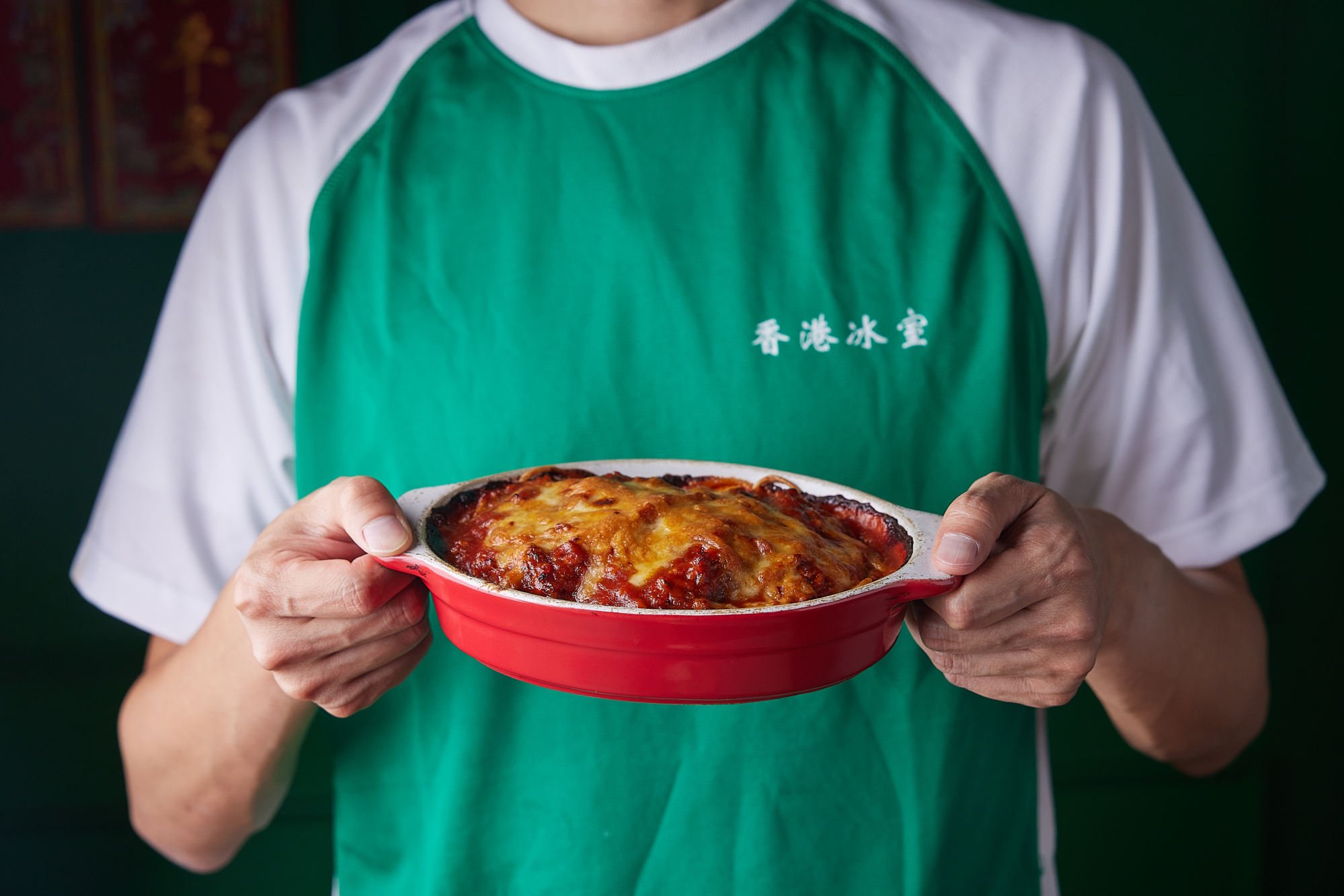
Cheung and Chan welcome a wide and diverse range of customers, some of them trying Hong Kong food for the first time.
“We’ve had people ask for pearls in their milk tea and to adjust it to 30 per cent sweetness, or for chilli and soy to put on the dou fu faa,” says Cheung with a little chuckle.
“Often people drink hung dau bing without mixing it, the same with iced lemon tea, which is why we pre-mix it before serving,” adds Chan. “It requires a bit of education sometimes, but we do feel people should know how Hong Kong food is traditionally enjoyed.

“I want people to find a corner of Hong Kong when they come here; and food plays an important part in that.”
It’s more than just the food that keeps people coming back; they have captured the essence of what it feels like to be in a busy, noisy Hong Kong restaurant, and it is this feeling that keeps their restaurants buzzing throughout the week.
The couple, who don’t travel back to Hong Kong often, understand all too well the difficulties of living away from home. Their two outposts are located in suburbs – Burwood and Eastwood – with a large Hong Kong and mainland Chinese population.
‘Enriched the culinary scene’: Hong Kong migration to UK spices up the food
In Burwood, Cantonese is the third most spoken language, after English and Mandarin.
The couple emphasise that it’s not just the customers who find comfort at Hong Kong Bing Sutt, it’s the staff, too, many of whom are students or in Australia on working holiday visas.
“My wife is kind of like their mum; she reminds them to call their parents, checks in on them, and we teach them skills and give them confidence,” says Cheung.

Burwood was one of 12 local government areas where a curfew was imposed during the Covid-19 pandemic, restricting movement from 9pm to 5am. It put a strain on a lot of businesses, Hong Kong Bing Sutt included.
Despite the restrictions, the couple endeavoured to do everything they could to support their staff, from dropping off meals to checking in on them, creating new takeaway meals to sustain the business and donating lunchboxes to the community.
“It was very difficult and scary, but we are just like a family here,” Cheung says. “We need to work hard to take care of our staff, too.”
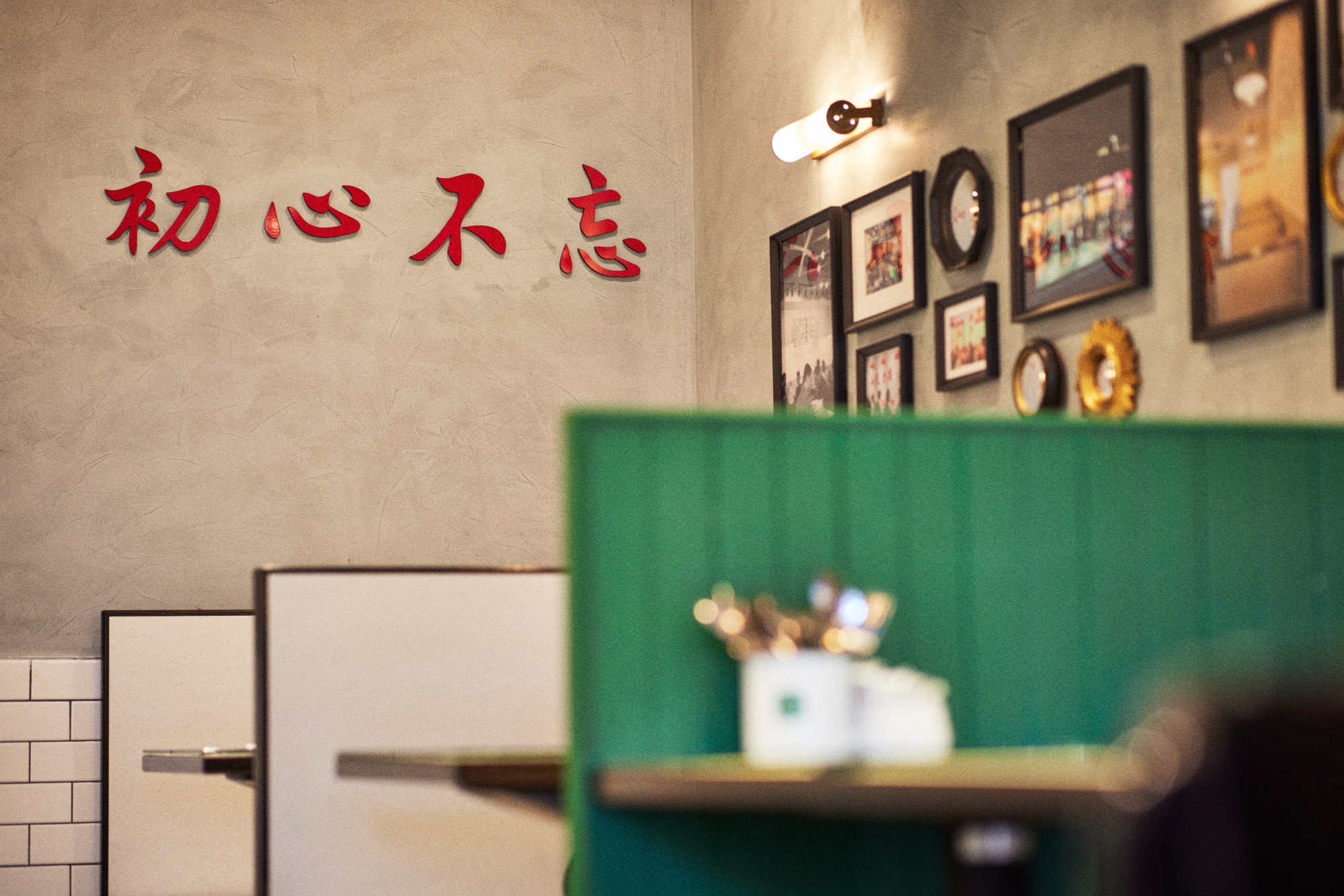
Both of the pair’s restaurants have a sing yu (idiom consisting of four characters) on a wall, chosen to uplift themselves, their staff and customers – in Burwood, it reads zi zuk seong look, a reminder to be content with what you have, no matter how simple, and in Eastwood, tso sum but mong, don’t forget your original intention.
For Cheung and Chan, owning a space where anyone who loves Hong Kong can feel at home is incredibly meaningful. Acknowledging that Hong Kong has changed in recent years, they say they hope that here at Hong Kong Bing Sutt, through food, design and language, memories of the city can live on.

